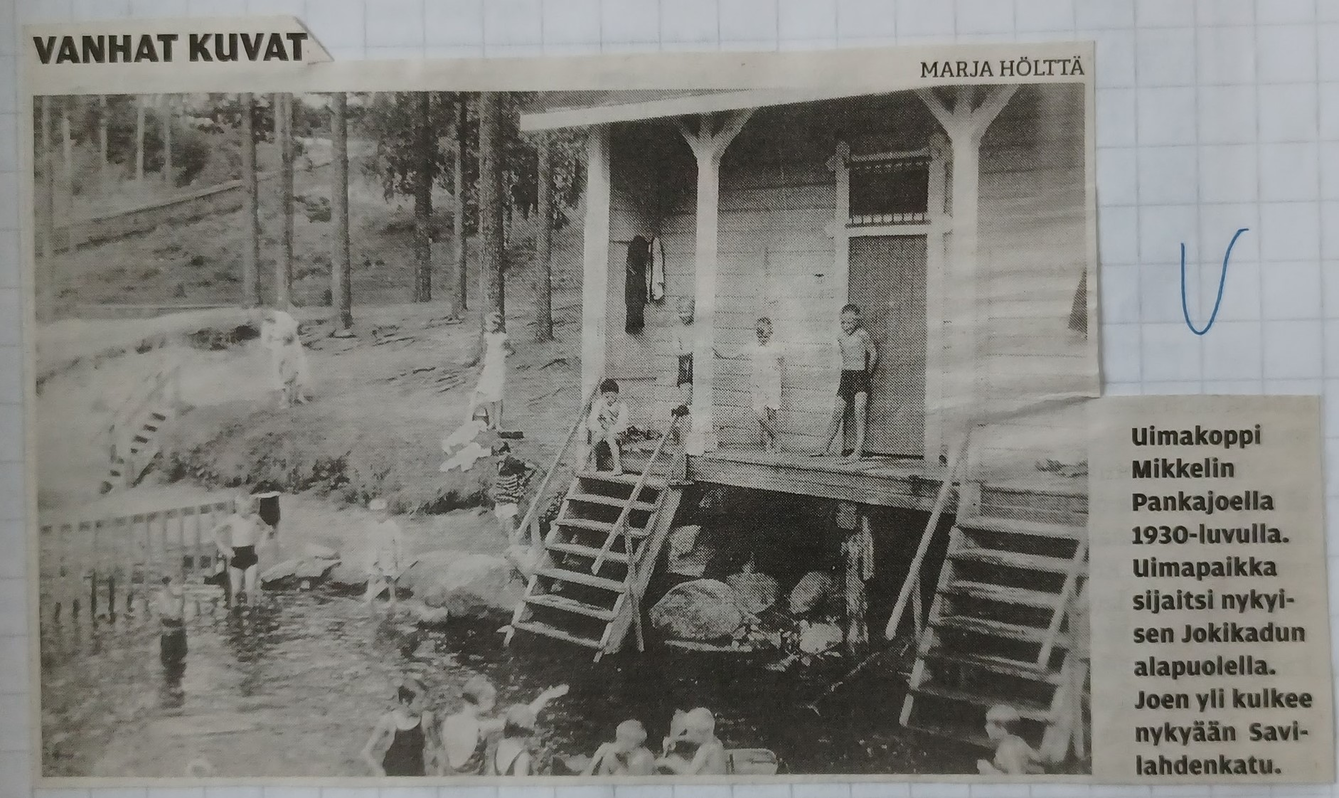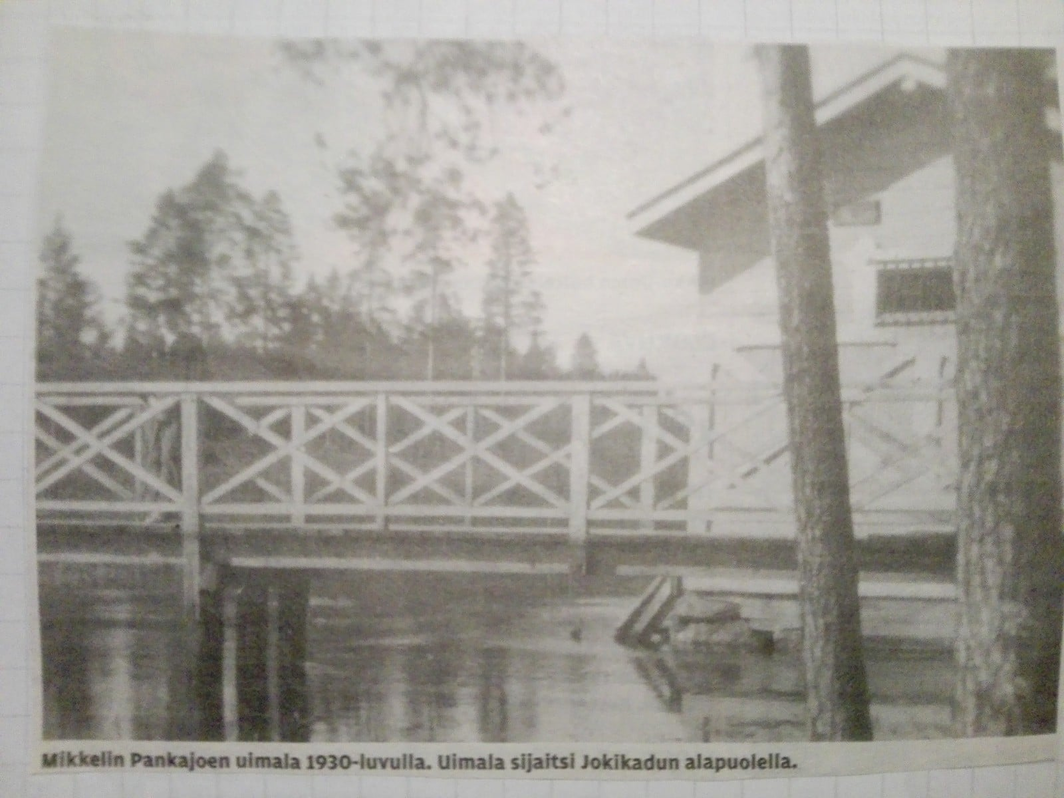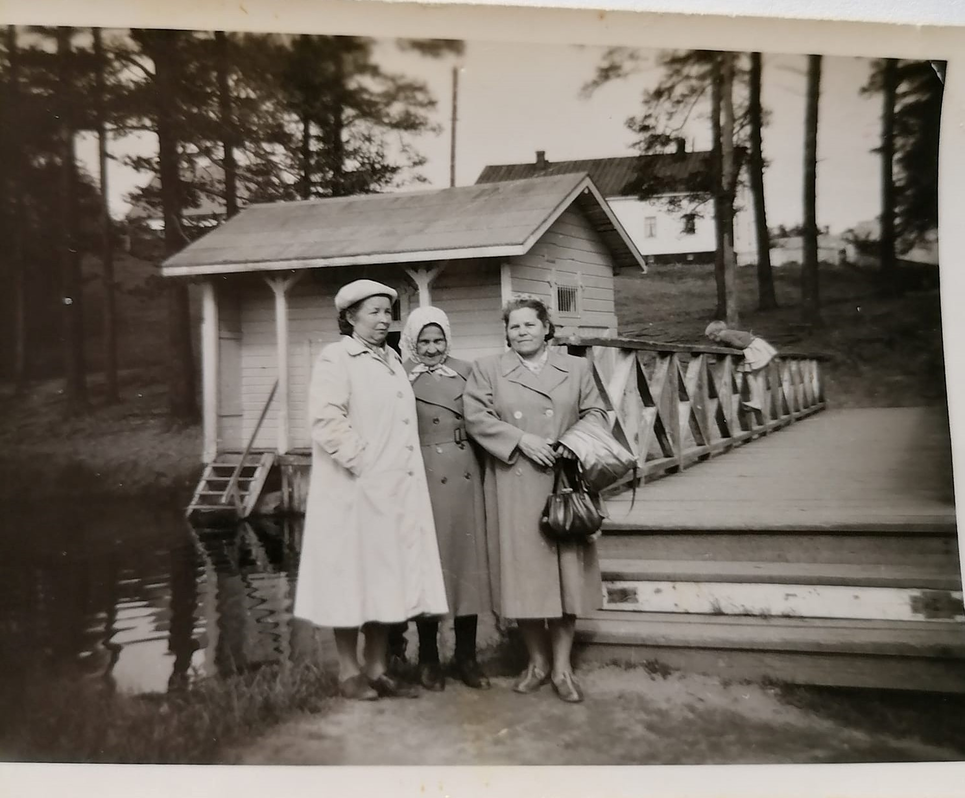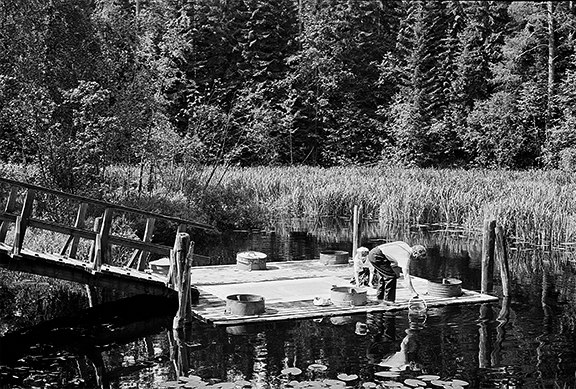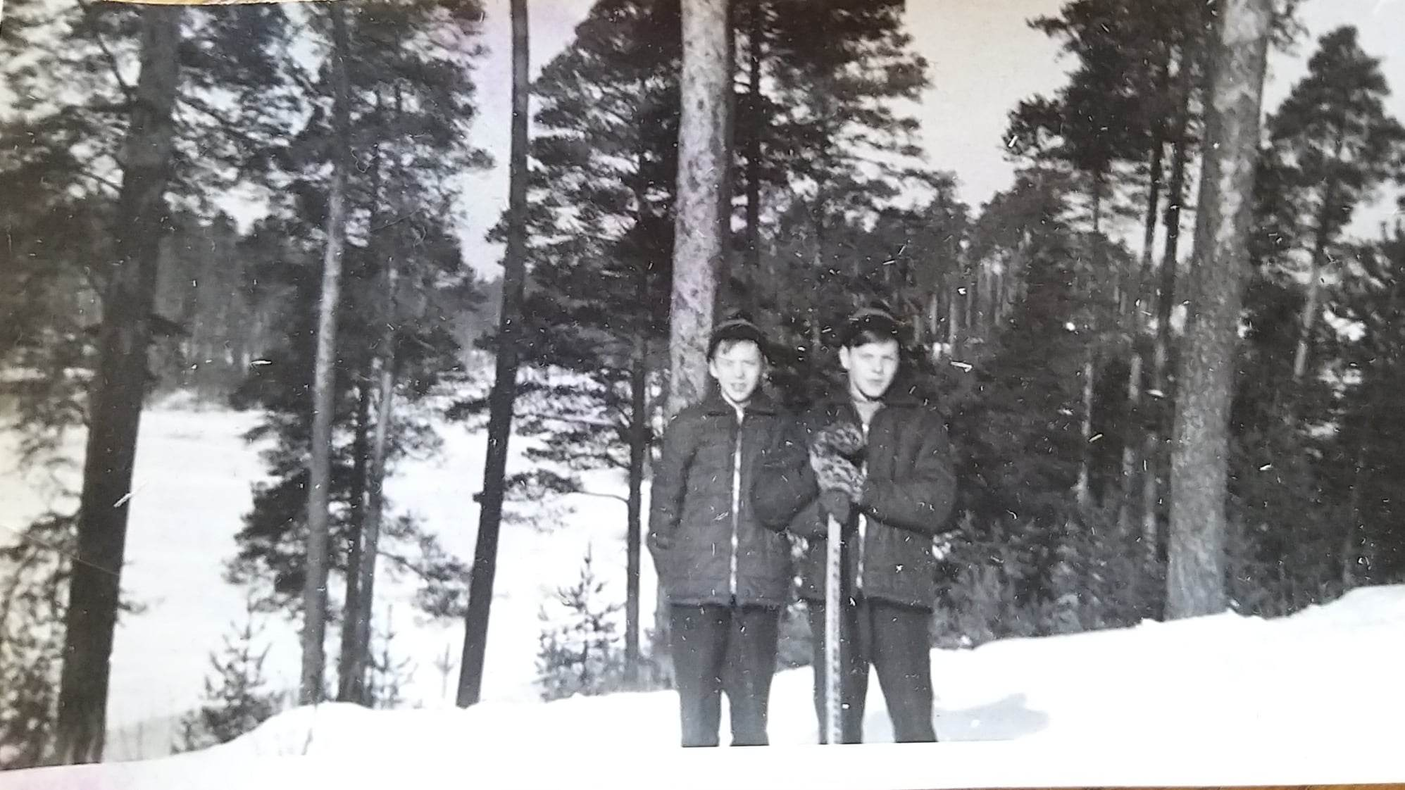The River (Memories)
≈≈≈≈≈≈≈≈
"It's hard to say how much of our memories are hidden or preconsciously structured through certain places. [...] We are doomed to be tourists of the unconscious, no matter how much we may want to reject our journey to the battlefields of childhood rejection." (Kuusamo 1992, 261)
When I planned my artwork Mattolaituri (Carpet Pier) for the bank of the Pankajoki River in late winter 2022, I asked relatives and acquaintances to share memories and stories about the river and life in its vicinity. I collected old photographs and gathered other material by walking along the river both physically and virtually, alone and in a group[1]. I also reflected on my own memories of living by the river and doing laundry with my grandma by the river, and of all the handwork I did with her in my childhood. Thus, the artwork was built narratively around both personal and collective memories. Through the wooden narrative, my aim was to understand the past, bring what is gone into the present, and to slow down the fading of memories.
In recent decades, reminiscence has increased its role in the construction of historical knowledge. Reminiscence has become more democratic (Miettunen 2013, 169), and in memory and cultural research everyone has the opportunity to produce history voluntarily from their own experience (Savolainen, Lukin, Heimo, 2020, 61). The Pankajoki River has cut through the landscape of Southern Savo, Finland since the Ice Age, for about ten thousand years. The river probably has its own memory and its own recollections as well. According to ecocritical and new materialist research trends, all things, materials and objects have the ability to communicate something about themselves to other beings. Both human and non-human stories are intertwined (Iovino, Oppermann 2014, 7). Just as the river has inspired reminiscence, it has also been a material condition and enabler of remembrance (Hankonen 2020, 113; Savolainen et al. 2020, 62). For us memoirists, the river is coloured by our own experiences. The beaver building its dam probably has a different understanding of the river.
Finnish artist Marjo Heino has worked as an artist-researcher, coordinating the participatory art processes in a project which focused on the rural cultural landscape of the Kokemäenjoki River in Western Finland from 2017 to 2019. The core of her project was to give a voice to local inhabitants and their daily experience of the river landscape, and to work as an artist within the context of participatory landscape conservation. In addition to her own artistic practise, Heino collaborated with an expert in landscape research for two years. In her artistic doctoral dissertation (Heino 2023) she advocates for trust in artists and art’s capacity to reach communities; to delve deeper into processes and enhance a sense of togetherness.
Compared to Heino´s work, Mattolaituri (Carpet Pier) and my contribution to the river landscape of my hometown was more modest. I made my artwork alone, without institutional support, at low costs and outside of an institutional contemporary art context. Instead of a traditional art object or piece of monumental art, I defined Mattolaituri (Carpet Pier) as a memory object or a sort of ‘negation of the monument’. It was something between environmental art, scenography, installation, participatory art, social sculpture, and site-specific art in the expanded field of sculpture. Its relationship with the environment and the visitors was more important than its aesthetics as an art object.
I also thought of Mattolaituri (Carpet Pier) as a boundary object or boundary work (Borgdorff (2012), which would unite, negotiate and invite as many forest path walkers as possible. Instead of targeting an art audience, it was mainly aimed at city dwellers living in the area and otherwise moving around there. The work contained elements that even the uninitiated to contemporary art could identify with and experience as their own: cosy memories and the possibility to fish or sunbathe, for example. Located on the banks of the Pankajoki River, along a forest path in Mikkeli, it was difficult to find and was encountered somewhat unexpectedly. Stepping onto the pier through the dense riparian vegetation was a kind of immersive experience, where one became part of the river ecosystem.
[1]On 10.9.2022 I organised an event with my biologist friend Saara Ryhänen, where we walked by the river with city residents, doing small art exercises and observed the river with many different eyes. It could be seen as a sort of walking interview, or ‘go-along’ interview; an ethnographic method for collecting diverse research material sensitive to environmental relations, linked to experiential place and local culture (Hankonen 2020, 111).
The Pankajoki River flows slowly through Mikkeli, Eastern Finland, on the edge of the estuary created by the Ice Age. The river is several tens of kilometres long in total. The Pankajoki River area was protected as a nature reserve in 1981 and is now part of the Natura 2000 network.
The river is quite overgrown. Human damming has affected the flow rates, while the reduced flow has contributed to the silting of the riverbed, which has in turn increased the eutrophication of the water. In addition to the dams, several slaughterhouses have been located along the river, which, in addition to drainage of bogs and fertilizers for coastal fields, have eutrophicated the waterways. For decades, Pankajoki also housed a laundry and several hand-washing sites from which wastewater was discharged directly into the river. Along with humans, the beaver has also contributed to changes in the river´s currents by building dams upstream throughout the 1990s (Kosonen et al. 2021).
The area is a popular outdoor and recreational space, with numerous trails, routes and cross-country skiing tracks used for hiking, jogging and other outdoor activities. People also cross the river for work and hobbies. The area plays a key role in the identity of the city's residents, and many people mention it as one of the best aspects of the city of Mikkeli.

